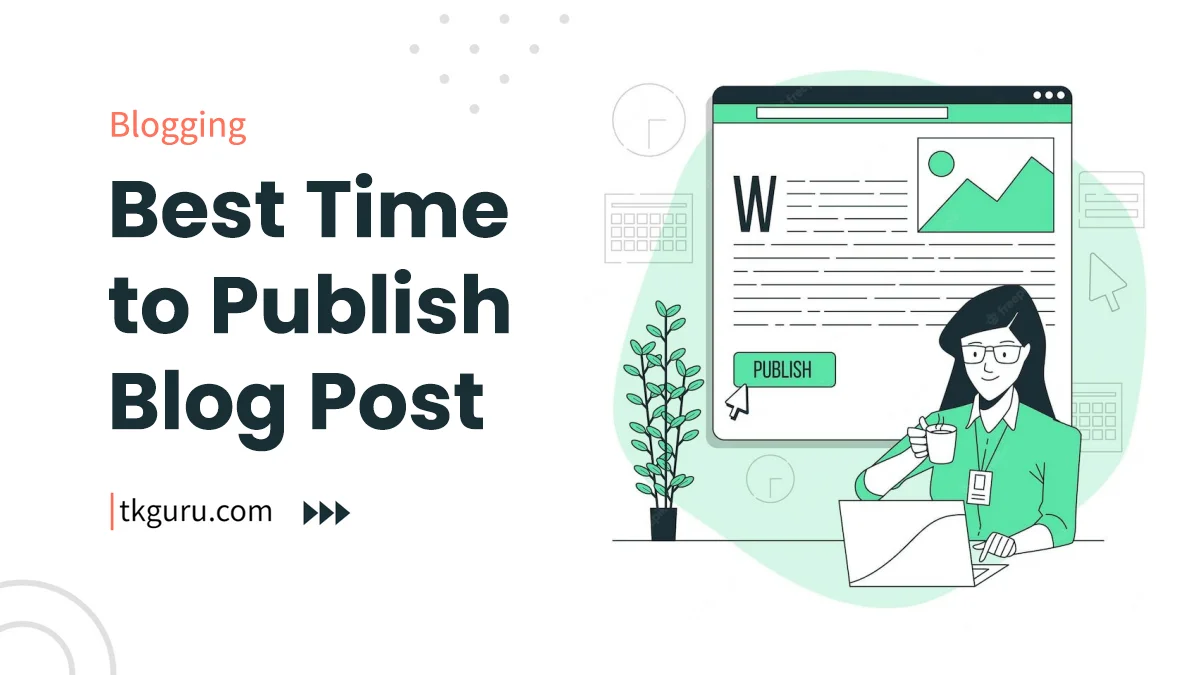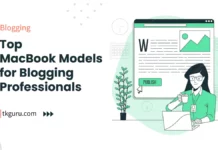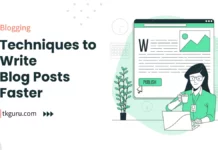Advertisements
Ratings

Best Time to Publish Blog Post – When it comes to publishing your blog posts, timing plays a critical role in determining their success.
Choosing the right time to publish can significantly impact your reach, engagement, and overall effectiveness of your content.
In this article, we’ll explore the factors that influence the best time to publish your blog posts, how to analyze your audience’s behavior, and strategies for maximizing the impact of your content through timing.
Contents
- 1. Understanding Audience Behavior
- 2. Factors Affecting Timing
- 3. Analyzing Niche Trends
- 4. Research and Data-Driven Approach
- 5. Best Time for Different Social Platforms
- 6. Time Zone Considerations
- 7. Consistency and Audience Expectations
- 8. A/B Testing and Experimentation
- Conclusion
- Best Time to Publish Blog Post FAQs
1. Understanding Audience Behavior
Before diving into the specifics of timing, it’s essential to understand your audience’s behavior and habits.
Different audiences have different preferences for when they consume online content. Analyzing your audience’s behavior can help you determine the ideal times to publish that align with their routines. To get started, consider the following aspects:
- Peak Hours: Identify the times of day when your audience is most active. This might be during their commute, lunch break, or evenings.
- Days of the Week: Understand whether your audience is more engaged on specific days. For instance, B2B audiences might be more active during weekdays, while general consumers might engage more on weekends.
- Demographics: Consider the demographics of your audience. Factors like age, location, and profession can influence when they’re likely to be online.
2. Factors Affecting Timing
Several factors can impact the best time to publish your blog post. Let’s explore these factors in detail:
- Time Zones: If your audience is spread across different time zones, consider scheduling your posts to cater to a broader audience. Tools like CoSchedule and Buffer can help you schedule posts based on different time zones.
- Weekdays vs. Weekends: Depending on your audience’s behavior, you might find that certain days of the week are more conducive to engagement. While weekdays might be better for B2B audiences, weekends could be ideal for leisure and lifestyle content.
- Holidays and Events: Take into account holidays and significant events that might affect your audience’s online presence. Adjust your posting schedule accordingly to avoid competing for attention during busy times.
3. Analyzing Niche Trends
The timing of your blog posts should also align with niche-specific trends. Each niche has its own peak engagement times, often influenced by industry-related patterns.
Conduct research within your niche to understand when audiences are most active and likely to engage with your content.
4. Research and Data-Driven Approach
A data-driven approach is key to finding the best time to publish your blog posts. Utilize tools like Google Analytics, social media insights, and email marketing metrics to gather data on when your audience is most active.
Pay attention to metrics like page views, click-through rates, and social media shares during different times and days.
Table: Analyzing Data-Driven Insights
| Metric | Best Performing Time | Average Engagement | Lower Engagement |
|---|---|---|---|
| Page Views | 10:00 AM – 12:00 PM | 2:00 PM – 4:00 PM | Late Evening |
| Click-Through Rate | 8:00 AM – 10:00 AM | 3:00 PM – 5:00 PM | Night |
| Social Shares | 1:00 PM – 3:00 PM | 9:00 AM – 11:00 AM | After Midnight |
5. Best Time for Different Social Platforms
Different social media platforms have varying peak engagement times. For instance, Instagram might have different user behaviors compared to LinkedIn.
It’s crucial to tailor your publishing schedule to each platform’s audience behavior.
Table: Ideal Posting Times for Social Media Platforms
| Social Platform | Ideal Posting Times |
|---|---|
| 9:00 AM – 1:00 PM and 3:00 PM – 4:00 PM | |
| 9:00 AM – 3:00 PM | |
| 11:00 AM – 1:00 PM | |
| 7:45 AM – 9:00 AM and 5:15 PM – 6:45 PM |
6. Time Zone Considerations
If your target audience spans multiple time zones, it’s essential to consider their locations when scheduling your blog posts.
Tools like CoSchedule and Buffer allow you to schedule posts based on different time zones, ensuring that your content reaches readers across the globe at their optimal times.
7. Consistency and Audience Expectations
While finding the best time to publish is important, maintaining consistency is equally crucial.
Your audience comes to expect your content at specific times, so it’s essential to stick to a regular posting schedule.
Consistency helps build trust and ensures that your readers know when to anticipate new content.
8. A/B Testing and Experimentation
Experimentation is key to determining the optimal publishing times for your specific audience.
Conduct A/B tests by publishing content at different times and comparing the engagement metrics.
Over time, these tests will help you pinpoint the times that consistently yield the best results.
Conclusion
The timing of your blog post publication can significantly impact its reach and engagement.
By understanding your audience’s behavior, considering various factors affecting timing, analyzing niche trends, using a data-driven approach, and tailoring your posting schedule to different social platforms, you can maximize the impact of your content.
Remember that timing isn’t static—audience behaviors and trends evolve, so continue to monitor your metrics and adjust your strategy accordingly.
Best Time to Publish Blog Post FAQs
Is there a universally best time to publish a blog post?
How can I determine the best time to publish my blog posts?
To determine the best time to publish your blog posts, consider these steps:
- Audience analysis: Understand your audience's location, habits, and when they are most active online.
- Competitor research: Analyze when your competitors publish and whether they have success at specific times.
- A/B testing: Experiment with different publishing times and track engagement metrics like views, comments, and shares.
- Analytics tools: Use website analytics to identify patterns in user traffic and behavior.
- Surveys and feedback: Ask your audience when they prefer to read your content through surveys or direct interactions.
Are there general guidelines for optimal blog post publishing times?
While there are no universal rules, some general guidelines can help you get started:
- Weekdays are often better than weekends for professional and business-oriented content.
- Early mornings (between 7 AM and 9 AM) and late afternoons (between 3 PM and 5 PM) are often good times to consider.
- Tuesdays and Thursdays are commonly recommended as favorable days.
- Consider your audience's work schedules and routines when choosing a time.
Should I adjust my publishing schedule based on my audience's time zones?
Yes, adjusting your publishing schedule to align with your audience's time zones can be beneficial, especially if you have a global audience. Use scheduling tools to ensure your blog posts are released at a time when your key audience segments are most likely to be online and active.
Can I have multiple publishing times for different types of content or audiences?
Yes, it's common for bloggers to have multiple publishing times for different types of content or audience segments. For instance, you might find that morning posts work best for one audience segment, while evening posts are more effective for another. Experimentation and analytics can help you refine your publishing schedule for each specific situation.
| Web Hosting | Website |
| WordPress | Google Adsense |
| SEO | Affiliate Marketing |
| Blogging | YouTube |
Recent Posts
- Windows vs Mac: Choosing the Ideal Laptop for Your Needs
- 10 Best Budget Friendly Laptops for Bloggers with Impressive Performance
- Top MacBook Models for Blogging Professionals
- 10 Best Laptops for Content Creators in 2023
Related Tags
best time to post a blog on wordpress, best time to post blog 2023, best day to publish a blog post, blogger, best time to post on linkedin, best time to post on instagram, best time to publish on substack, google analytics,






